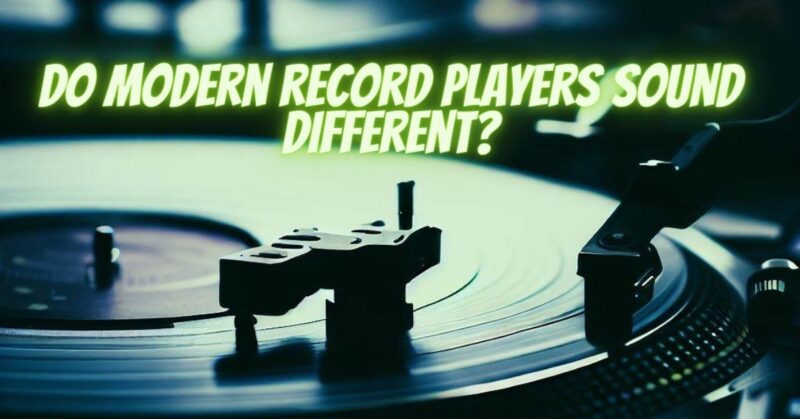Vinyl records have experienced a resurgence in popularity, captivating audiophiles and music enthusiasts alike with their warm and nostalgic sound. With the resurgence of vinyl, modern record players have also made their mark in the market. As technology advances, one may wonder if modern record players sound different from their vintage counterparts. In this article, we will explore the key differences between modern and vintage record players and whether modern record players truly sound different.
The Vinyl Resurgence and Modern Record Players:
In recent years, vinyl records have experienced a remarkable comeback, with many music lovers drawn to the tangible and authentic experience they provide. As a result, modern record players have evolved to cater to contemporary consumers while retaining the charm of analog audio.
Key Differences Between Modern and Vintage Record Players:
- Technology and Build Quality:
Modern record players often incorporate advancements in engineering and materials, resulting in improved build quality and durability. Precision engineering allows for more consistent rotation speeds, reducing wow and flutter, which are common issues with vintage players.
- Belt-Drive vs. Direct-Drive:
Vintage record players typically used either belt-drive or direct-drive mechanisms to spin the platter. Modern record players may offer both options, each with its advantages. Belt-drive systems tend to reduce motor noise, providing a quieter listening experience. On the other hand, direct-drive systems offer better speed stability, making them more suitable for DJ applications.
- Phono Preamp and Connectivity:
Many modern record players come with built-in phono preamps, which convert the low-level signal from the turntable into a line-level signal for connection to amplifiers or powered speakers. This eliminates the need for a standalone phono preamp, making setup more convenient for users.
- USB and Digital Conversion:
Some modern record players come equipped with USB ports, allowing users to digitize their vinyl collection by converting analog signals to digital formats. This feature appeals to those seeking to enjoy vinyl’s warmth while still having the option to digitize their favorite tracks for digital playback.
Do Modern Record Players Sound Different?
The short answer is that modern record players can sound different from vintage record players, but not inherently so. The sound quality of a record player is influenced by various factors, including the turntable’s design, cartridge, tonearm, and speaker system used.
Modern record players with high-quality components and engineering can deliver excellent sound quality that rivals vintage players. Many modern turntables are built with attention to detail and can offer a faithful and accurate sound reproduction. However, some entry-level or budget-oriented modern record players may sacrifice build quality and components, leading to potential differences in sound quality compared to higher-end models.
Ultimately, the sound difference between modern and vintage record players can be subjective and dependent on individual preferences. Some may prefer the warm and nostalgic sound of vintage record players, while others may appreciate the convenience, reliability, and fidelity of modern record players.
Modern record players have embraced technology advancements, offering improved build quality, convenient features like built-in phono preamps, and options for both belt-drive and direct-drive systems. While modern record players can sound different from their vintage counterparts, the sound quality is influenced by various factors such as build quality, components, and engineering. As technology continues to evolve, modern record players have found a place in the hearts of audiophiles and music enthusiasts, catering to their desire for the timeless allure of vinyl records with the convenience of modern amenities.


